Museum of the American Gangster
Introduction
Author-Uploaded Audio
An Introduction to the museum
Text-to-speech Audio
Images
The entrance to the Museum of the American Gangster, which opened in 2010.
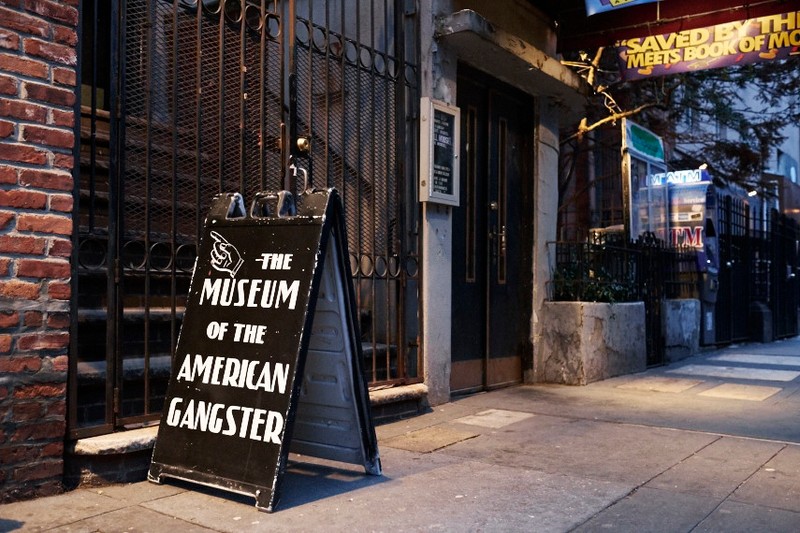
Museum of the American Gangster Museum Owner and Head Curator, Lorcan Ortway.
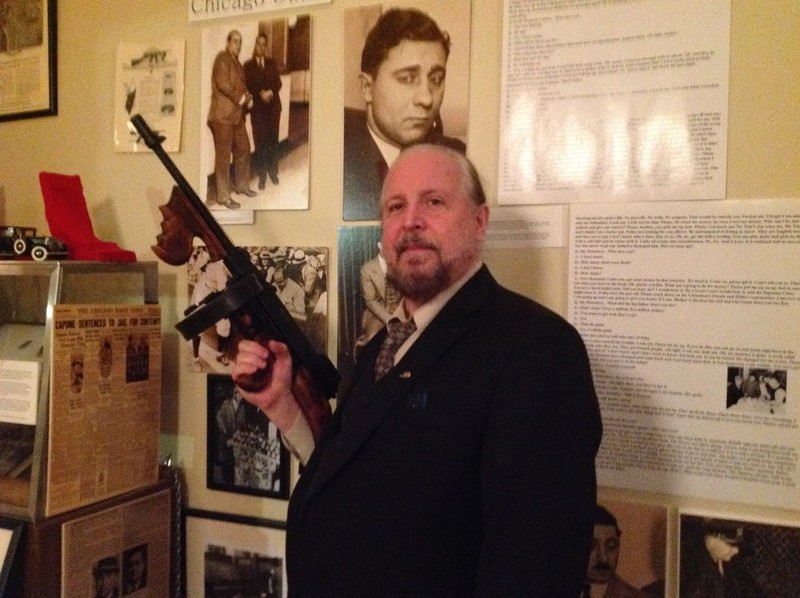
A wanted poster for Arthur Fegenheimer, American mobster, displayed in the museum.
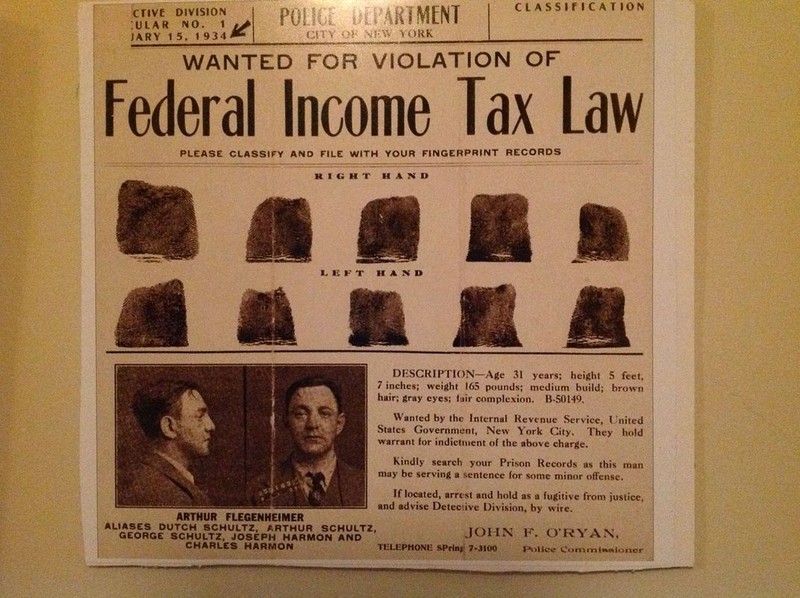
A bootlegging contraption used during Prohibition displayed in the museum.

A photograph showing Prohibition officers conducting a raid on bootleggers.
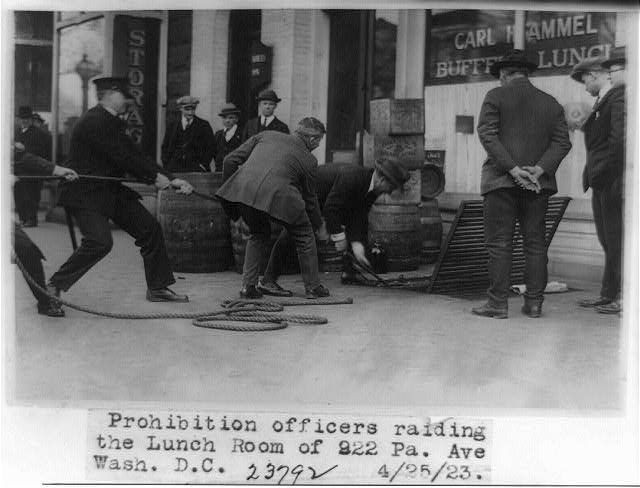
Police officers dismantling a bar located in a speakeasy during Prohibition.
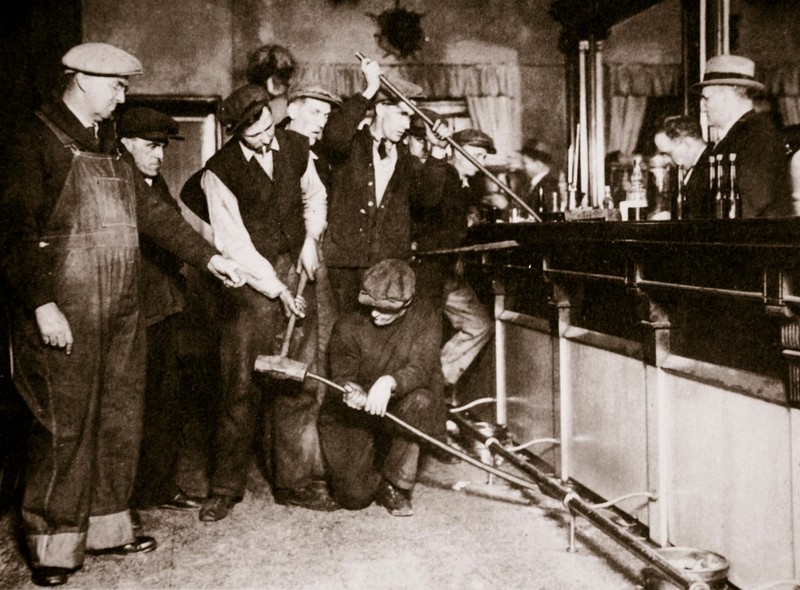
Backstory and Context
Text-to-speech Audio
The Museum of the American Gangster has a complicated history. In an interview with the Smithsonian Magazine, curator and museum owner Lorcan Otway revealed that he inherited the museum building from his father, who came to own the building from a man named Walter Schieb, who is described as the "underling" of the building's original owner, Frank Hoffmann. Hoffmann used the building as a speakeasy, using secret tunnels and passageways to destroy evidence of illegal alcohol. After Otway's father passed, he inherited the building. He became obsessed with the building's stories and the history of organized crime itself,
"When the older Otway died in 1994, his son inherited the building and its mysteries. Slowly, his interest in the building turned into an obsession. He dug into newspaper archives and visited the offices of medical examiners. (...) In 2010, Otway gave his obsession life. He transformed the ground floor apartment of 80 St. Mark’s Place into The Museum of the American Gangster, turning its two rooms into something that straddles the line between shrine and a forensic exhibition."3
The Museum of the American Gangster focuses on the history of Prohibition, or the 18th Amendment, in the United States and organized crime, which rose dramatically and almost directly in response to Prohibition. The history of organized crime begins with 17th-century pirates, but organized crime in the United States can be traced back to Prohibition. Bootleggers, speakeasies, and the rise of the Italian, Russian, and even Irish mafia. This also led to the rise of gangs, and infamous crime bosses such as Al Capone and Lucky Luciano. The museum itself features many artifacts associated with the Prohibition Era and organized crime. Included is a prescription for alcohol as "medicine", a picture of gangster Frank Costello, and a bullet from the shooting of Pretty Boy Floyd, an American bank robber.
The history of organized crime in the United States can be mostly linked back to Prohibition. The idea of Prohibition came from the Progressive movement as well as suffragists. They pushed for Prohibition by claiming it would lower crime and improve public health and education. Prohibition went into effect in the form of the 18th Amendment. The 18th Amendment banned the production, transportation, and sale of alcohol. This period is known as the Prohibition Era. However, this only led to an increase in crime and the creation of organized crime and gangs. The law was first enforced by the IRS, and then by the Prohibition Bureau. The law was easy to enforce in small, rural areas; but it was big cities such as Chicago or NYC that really opposed the amendment, and it was in these cities that organized crime and gangs became most prevalent.
The opposition of Prohibition came in the formation of speakeasies, bootlegging, and gangs. Speakeasies were secret clubs that sold alcohol and were often owned and attended by leaders of crime organizations. They gained popularity during the Prohibition Era and then became inactive with the ratification of the 21st Amendment in 1933 which made alcohol legal again. The term "bootlegging" refers to the illegal making and distribution of alcohol. Both speakeasies and bootlegging were often operated by gang members. Organized crime and gang violence thrived during this time as gangs made money through bootlegging. Gang violence rose during Prohibition as seen with the St. Valentine’s Day Massacre of 1929. A group of Chicago men who were believed to be involved with the infamous Al Capone disguised themselves as police officers and opened fire on a group of men from a rival gang.
The history of Prohibition and organized crime in the United States is full of stories that many still find shocking and entertaining. Gangs and gangsters have inspired many popular movies and television shows. The stories tied in with Prohibition and organized crime are what attracts us to history. The Museum of the American Gangster contains artifacts, pictures, and newspaper clippings that tell some of those stories. The museum offers general admission as well as guided tours and tours for school groups. This small, hidden museum on the streets of New York City provides a glimpse of that history filled with gangs, speakeasies, bootlegging, and even murder.
Sources
- Asbury, Herbert. "Gangs and the Gangsters as They Pass From View." The Sun (New York) July 20th 1919. , 3 sec, 1-
- Bramen, Lisa. October 28, 1919: The Day That Launched a Million Speakeasies, Smithsonian Magazine. October 28th 2010. Accessed October 25th 2020. https://www.smithsonianmag.com/arts-culture/october-28-1919-the-day-that-launched-a-million-speakeasies-103412698/.
- Burton, Tara Isabella. This Mobster Museum Was Once One of New York City’s Most Notorious Speakeasies, Smithsonian Magazine. January 6th 2016. Accessed October 25th 2020. https://www.smithsonianmag.com/travel/mobster-museum-speakeasy-180957704/.
- History.com Editors. Prohibition, HISTORY. October 29th 2009. Accessed October 25th 2020. https://www.history.com/topics/roaring-twenties/prohibition.
- Roos, Dave. How Prohibition Put the ‘Organized’ in Organized Crime, HISTORY. November 3rd 2020. Accessed December 11th 2020. https://www.history.com/news/prohibition-organized-crime-al-capone.
- Sandbrook, Dominic. How Prohibition backfired and gave America an era of gangsters and speakeasies, The Guardian. August 25th 2012. Accessed October 25th 2020. https://www.theguardian.com/film/2012/aug/26/lawless-prohibition-gangsters-speakeasies.
- Tomkins, Floyd W. Prohibition. The Annals of the American Academy of Political and Social Science, vol. 10915 - 25. Published September 1st 1923. JSTOR.
https://www.thewelcomeblog.com/stories-of-new-york/museum-of-american-gangster/7/5/2017
https://www.smithsonianmag.com/travel/mobster-museum-speakeasy-180957704/
https://www.smithsonianmag.com/travel/mobster-museum-speakeasy-180957704/
https://www.smithsonianmag.com/travel/mobster-museum-speakeasy-180957704/
https://www.smithsonianmag.com/arts-culture/october-28-1919-the-day-that-launched-a-million-speakeasies-103412698/
https://www.history.com/topics/roaring-twenties/prohibition#&gid=ci023ca5e4300024ae&pid=prohibition-hiding-alcohol-getty-804476932
